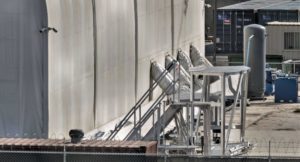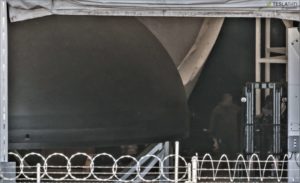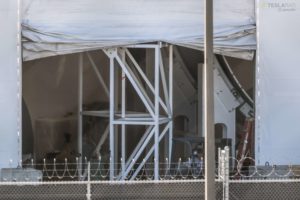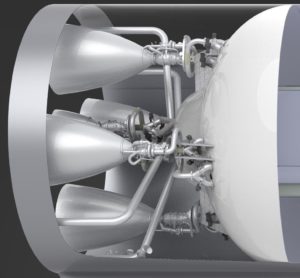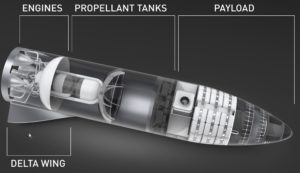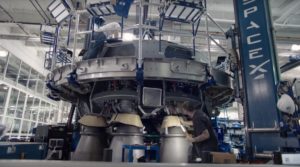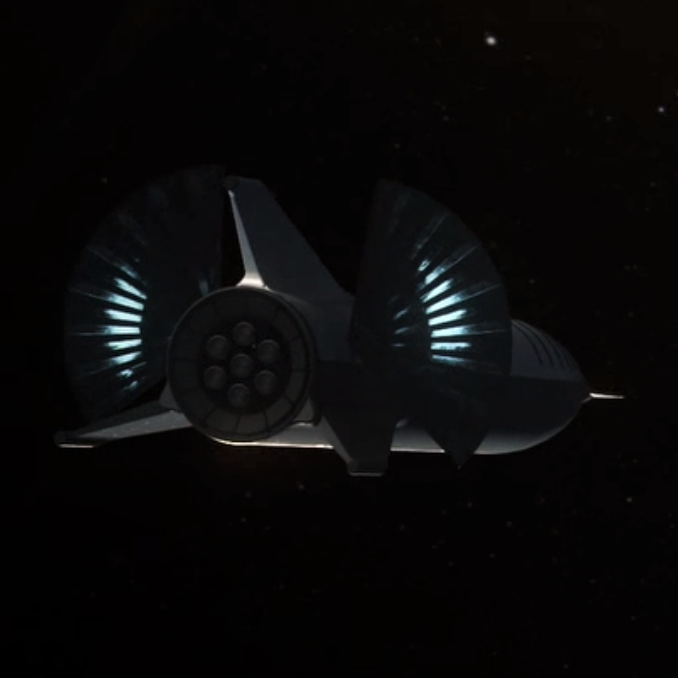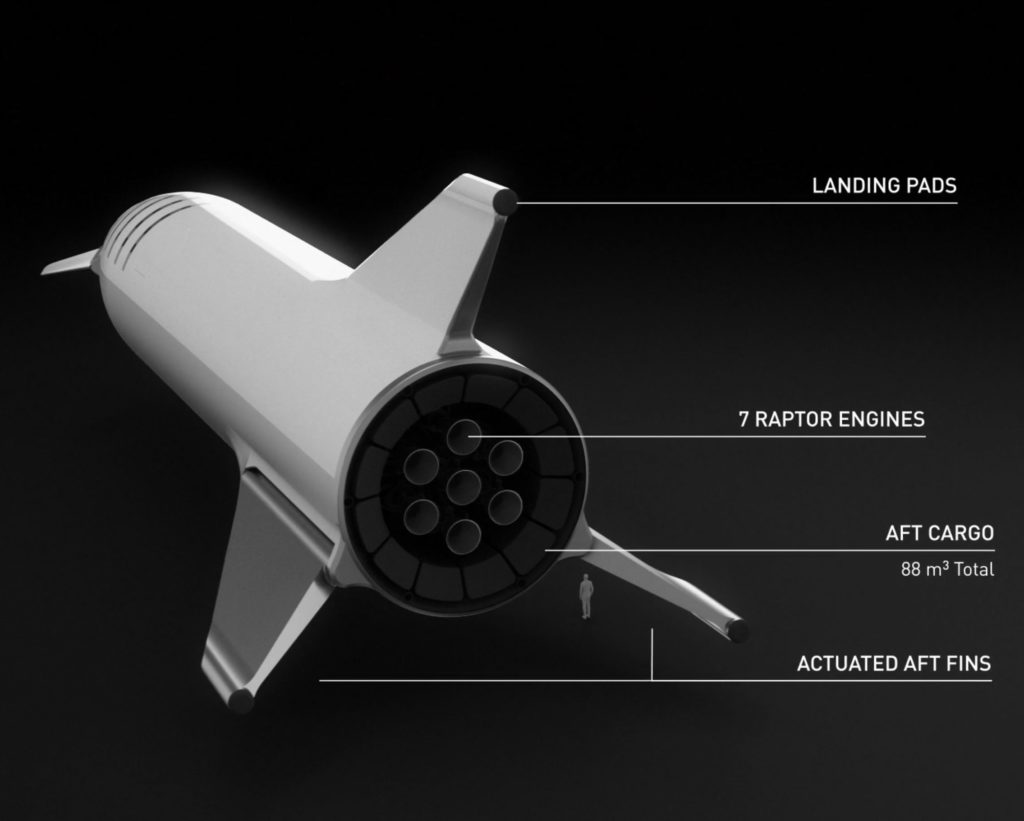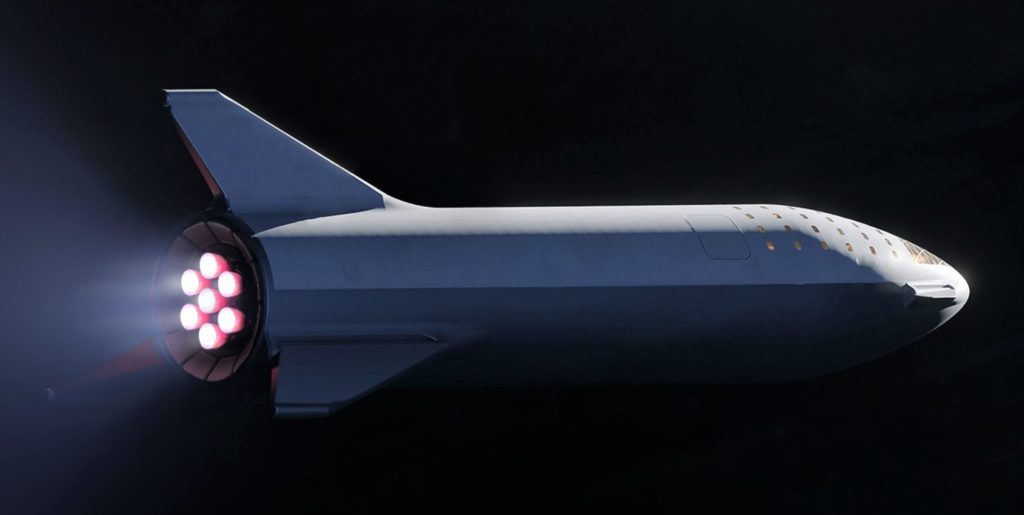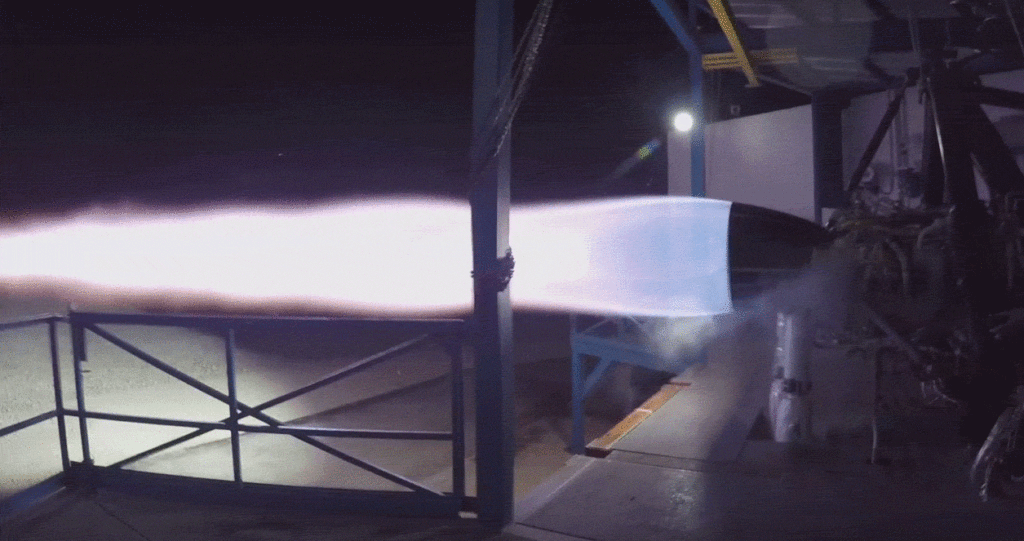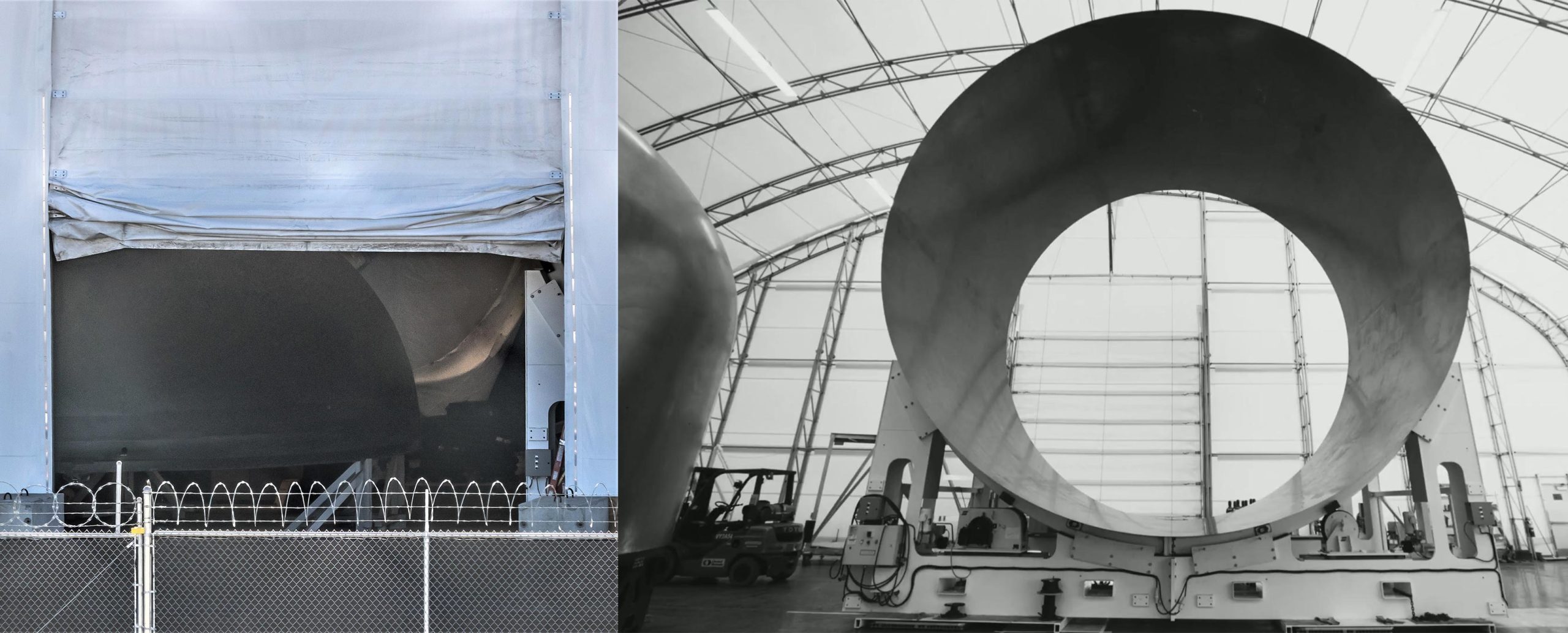
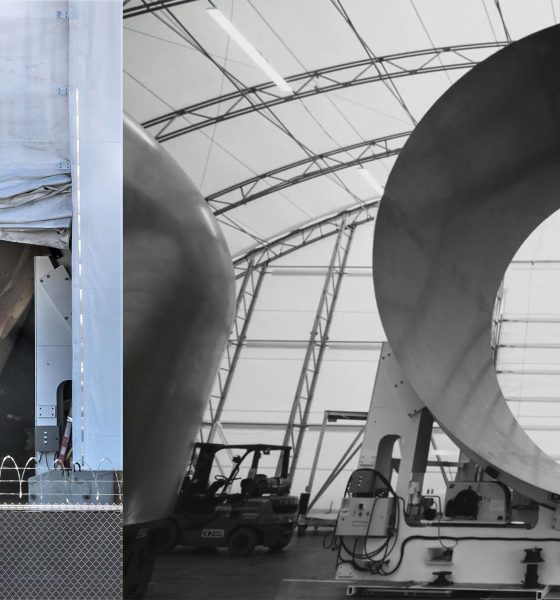
News
SpaceX’s next big BFR spaceship part finished in Port of LA tent facility
The first 9-meter (29.5-foot) diameter composite propellant tank dome for SpaceX’s full-scale BFR spaceship prototype has been spotted more or less complete at the company’s temporary Port of Los Angeles facility, unambiguous evidence that SpaceX is continuing to rapidly fabricate major components of its next-generation rocket.
Speaking at a dedicated BFR update event in mid-September, CEO Elon Musk foreshadowed as much, and recent updates have reiterated just how committed SpaceX is to BFR and just how keen the company is to waste no time at all.
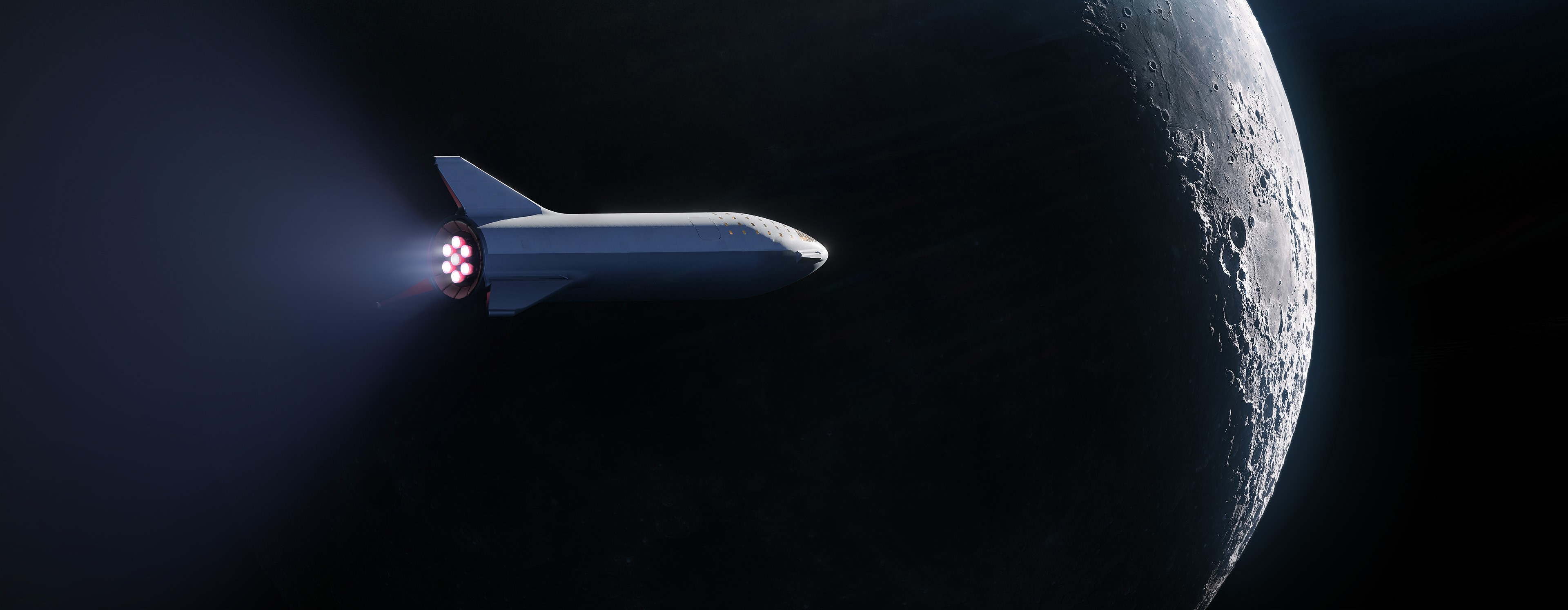
“We’ve built the first cylinder section…and we’ll be building the domes and the engine section soon.” – SpaceX CEO Elon Musk, September 2018
During that September 17th presentation, Musk did not parse his words despite a self-admitted tendency to look at SpaceX’s development program timelines (Falcon 9, Falcon Heavy, Dragon, BFR) through rose-tinted glasses. Just two months after he uttered the quote above, SpaceX has visibly either finished or nearly finished a 9-meter diameter BFR spaceship (BFS) tank dome.
Due to SpaceX’s opaque treatment of development programs (both literally for the tent and figuratively for official updates), it’s possible that this may even the second dome completed so far. Either way, it can be extrapolated – assuming that the layout of BFR 2017 is generally representative of BFR 2018 – that the first spaceship prototype will require two or three roughly identical tank domes. If the common-dome tank layout is basically the same (disclaimer: it might be quite different), then SpaceX may end up mounting BFS’ 7 Raptor engines almost directly to the rear of the bottom tank dome, requiring either significant structural reinforcement or a second uniquely-engineer and optimized dome.
- A tall platform was moved inside the tent around November 10th, likely to support the integration of the tank dome and barrel section. (Pauline Acalin)
- The dome was spied inside the tent on November 12. (Pauline Acalin)
- The dome (left) and barrel section (right) can now be integrated. (Pauline Acalin)
- BFR 2017’s spaceship engine section. (SpaceX)
- An overview of BFS (circa 2017). (SpaceX)O
Judging from SpaceX’s and Musk’s desire to make reusable rockets as reliable as (if not even more reliable than) commercial airliners, the safest form of mass-transit humans have created, it seems more likely than not that Raptor and BFR will continue SpaceX’s practice of quite literally surrounding each engine with thrust-transmitting structures that simultaneously act as armored shields. In the event that a Merlin engine fails on Falcon 9 or Heavy, each booster’s octaweb contains nine separate armored chambers that exist to isolate each engine in the event of a catastrophic failure. In fact, a Merlin failure – the only such in-flight failure known – during SpaceX’s CRS-1 Dragon launch in 2012 demonstrated the efficacy of this design, preventing the failure of just one of nine engines from causing total mission failure.
Rise of the ‘hexaweb’?
To replicate that design strategy on BFR (both booster and spaceship) would be an act of simple pragmatism – it’s always preferable to design for survivability and reliability than to couch launch and mission success primarily on the reliability of individual components. Because SpaceX chose not to share similarly detailed cutaways of BFR’s updated 2018 design, it’s unclear if the spaceship’s engine section (“hexaweb”, to borrow from “octaweb”) has changed dramatically.
Given the unexpected decision to move entirely away from a version of Raptor specifically optimized for vacuum operation for BFR’s first iteration, as well as the new presence of ~90 cubic meters of storage bins around the circumference of the spaceship’s aft, it’s possible that SpaceX will opt for a design more reminiscent of the Falcon family’s octaweb.
- The rear of SpaceX’s updated BFS.
- A better view. (SpaceX)
- A September 2018 render of Starship (then BFS) shows one of the vehicle’s two hinged wings/fins/legs. (SpaceX)
- A gif of Raptor throttling over the course of a 90+ second static-fire test in McGregor, Texas. (SpaceX)
Regardless, the appearance of a completed BFS tank dome is a major development on the vehicle’s path to integrated testing and paves the way for the fabrication of additional tank domes, barrel sections, engine sections, and more. Particularly obvious and noteworthy will be the fabrication of the prototype spaceship’s pointed cone-shaped nose section, its large tripod fins/wings/legs, and its two forward canard wings.
With all three fins/wings installed, BFS – in its current iteration – would have an unbelievable circumference of ~67 meters (220 feet) and a ‘finspan’ of perhaps 21 meters (~70 feet) tip to tip. BFS is going to be a very hard spaceship to hide.

News
Tesla aims to combat common Full Self-Driving problem with new patent
Tesla writes in the patent that its autonomous and semi-autonomous vehicles are heavily reliant on camera systems to navigate and interact with their environment.

Tesla is aiming to combat a common Full Self-Driving problem with a new patent.
One issue with Tesla’s vision-based approach is that sunlight glare can become a troublesome element of everyday travel. Full Self-Driving is certainly an amazing technology, but there are still things Tesla is aiming to figure out with its development.
Unfortunately, it is extremely difficult to get around this issue, and even humans need ways to combat it when they’re driving, as we commonly use sunglasses or sun visors to give us better visibility.
Cameras obviously do not have these ways to fight sunglare, but a new patent Tesla recently had published aims to fight this through a “glare shield.”
Tesla writes in the patent that its autonomous and semi-autonomous vehicles are heavily reliant on camera systems to navigate and interact with their environment.

The ability to see surroundings is crucial for accurate performance, and glare is one element of interference that has yet to be confronted.
Tesla described the patent, which will utilize “a textured surface composed of an array of micro-cones, or cone-shaped formations, which serve to scatter incident light in various directions, thereby reducing glare and improving camera vision.”

The patent was first spotted by Not a Tesla App.
The design of the micro-cones is the first element of the puzzle to fight the excess glare. The patent says they are “optimized in size, angle, and orientation to minimize Total Hemispherical Reflectance (THR) and reflection penalty, enhancing the camera’s ability to accurately interpret visual data.”
Additionally, there is an electromechanical system for dynamic orientation adjustment, which will allow the micro-cones to move based on the angle of external light sources.
This is not the only thing Tesla is mulling to resolve issues with sunlight glare, as it has also worked on two other ways to combat the problem. One thing the company has discussed is a direct photon count.
CEO Elon Musk said during the Q2 Earnings Call:
“We use an approach which is direct photon count. When you see a processed image, so the image that goes from the sort of photon counter — the silicon photon counter — that then goes through a digital signal processor or image signal processor, that’s normally what happens. And then the image that you see looks all washed out, because if you point the camera at the sun, the post-processing of the photon counting washes things out.”
Future Hardware iterations, like Hardware 5 and Hardware 6, could also integrate better solutions for the sunglare issue, such as neutral density filters or heated lenses, aiming to solve glare more effectively.
Elon Musk
Delaware Supreme Court reinstates Elon Musk’s 2018 Tesla CEO pay package
The unanimous decision criticized the prior total rescission as “improper and inequitable,” arguing that it left Musk uncompensated for six years of transformative leadership at Tesla.

The Delaware Supreme Court has overturned a lower court ruling, reinstating Elon Musk’s 2018 compensation package originally valued at $56 billion but now worth approximately $139 billion due to Tesla’s soaring stock price.
The unanimous decision criticized the prior total rescission as “improper and inequitable,” arguing that it left Musk uncompensated for six years of transformative leadership at Tesla. Musk quickly celebrated the outcome on X, stating that he felt “vindicated.” He also shared his gratitude to TSLA shareholders.
Delaware Supreme Court makes a decision
In a 49-page ruling Friday, the Delaware Supreme Court reversed Chancellor Kathaleen McCormick’s 2024 decision that voided the 2018 package over alleged board conflicts and inadequate shareholder disclosures. The high court acknowledged varying views on liability but agreed rescission was excessive, stating it “leaves Musk uncompensated for his time and efforts over a period of six years.”
The 2018 plan granted Musk options on about 304 million shares upon hitting aggressive milestones, all of which were achieved ahead of time. Shareholders overwhelmingly approved it initially in 2018 and ratified it once again in 2024 after the Delaware lower court struck it down. The case against Musk’s 2018 pay package was filed by plaintiff Richard Tornetta, who held just nine shares when the compensation plan was approved.
A hard-fought victory
As noted in a Reuters report, Tesla’s win avoids a potential $26 billion earnings hit from replacing the award at current prices. Tesla, now Texas-incorporated, had hedged with interim plans, including a November 2025 shareholder-approved package potentially worth $878 billion tied to Robotaxi and Optimus goals and other extremely aggressive operational milestones.
The saga surrounding Elon Musk’s 2018 pay package ultimately damaged Delaware’s corporate appeal, prompting a number of high-profile firms, such as Dropbox, Roblox, Trade Desk, and Coinbase, to follow Tesla’s exodus out of the state. What added more fuel to the issue was the fact that Tornetta’s legal team, following the lower court’s 2024 decision, demanded a fee request of more than $5.1 billion worth of TSLA stock, which was equal to an hourly rate of over $200,000.
Delaware Supreme Court Elon Musk 2018 Pay Package by Simon Alvarez
News
Tesla Cybercab tests are going on overdrive with production-ready units
Tesla is ramping its real-world tests of the Cybercab, with multiple sightings of the vehicle being reported across social media this week.

Tesla is ramping its real-world tests of the Cybercab, with multiple sightings of the autonomous two-seater being reported across social media this week. Based on videos of the vehicle that have been shared online, it appears that Cybercab tests are underway across multiple states.
Recent Cybercab sightings
Reports of Cybercab tests have ramped this week, with a vehicle that looked like a production-ready prototype being spotted at Apple’s Visitor Center in California. The vehicle in this sighting was interesting as it was equipped with a steering wheel. The vehicle also featured some changes to the design of its brake lights.
The Cybercab was also filmed testing at the Fremont factory’s test track, which also seemed to involve a vehicle that looked production-ready. This also seemed to be the case for a Cybercab that was spotted in Austin, Texas, which happened to be undergoing real-world tests. Overall, these sightings suggest that Cybercab testing is fully underway, and the vehicle is really moving towards production.
Production design all but finalized?
Recently, a near-production-ready Cybercab was showcased at Tesla’s Santana Row showroom in San Jose. The vehicle was equipped with frameless windows, dual windshield wipers, powered butterfly door struts, an extended front splitter, an updated lightbar, new wheel covers, and a license plate bracket. Interior updates include redesigned dash/door panels, refined seats with center cupholders, updated carpet, and what appeared to be improved legroom.
There seems to be a pretty good chance that the Cybercab’s design has been all but finalized, at least considering Elon Musk’s comments at the 2025 Annual Shareholder Meeting. During the event, Musk confirmed that the vehicle will enter production around April 2026, and its production targets will be quite ambitious.
